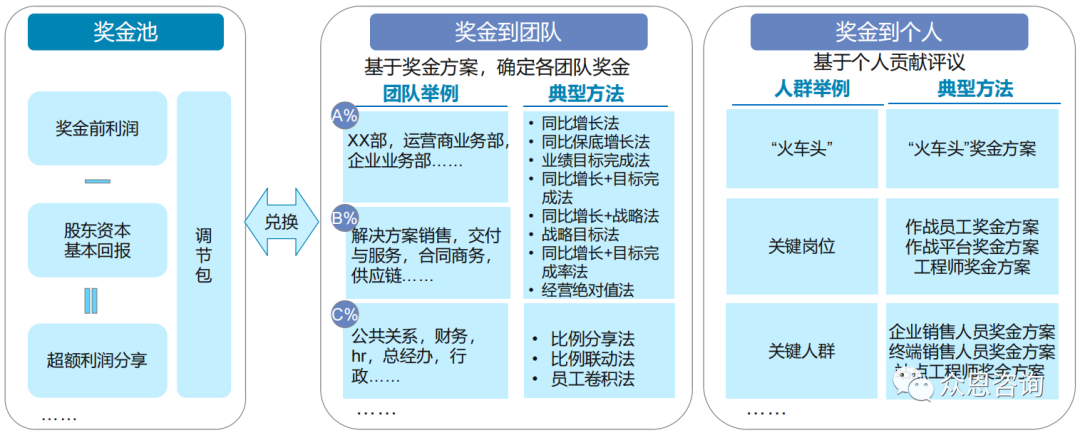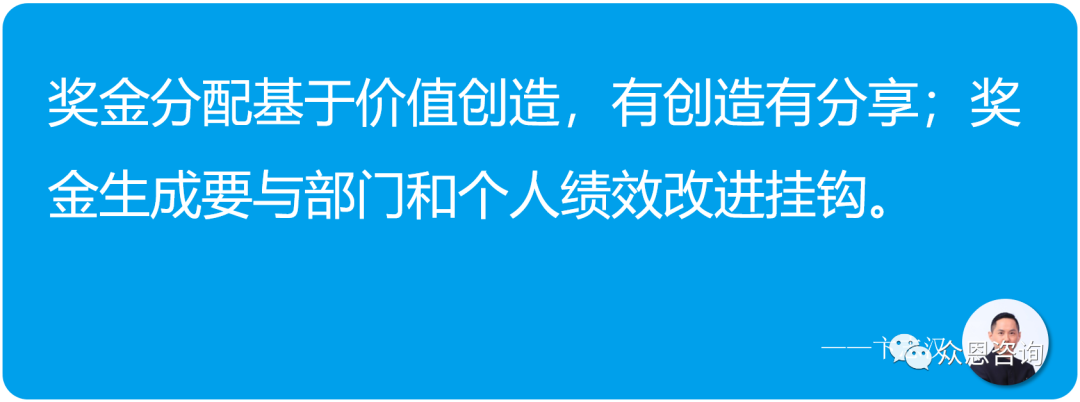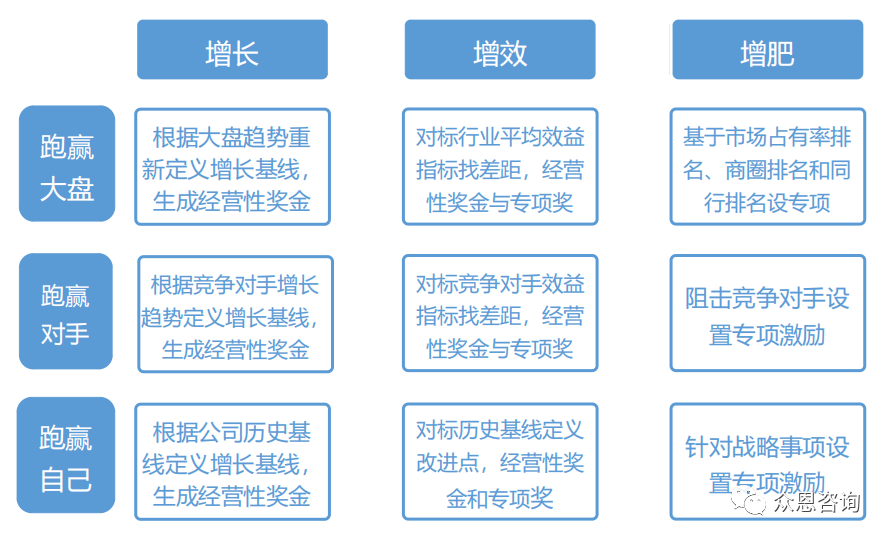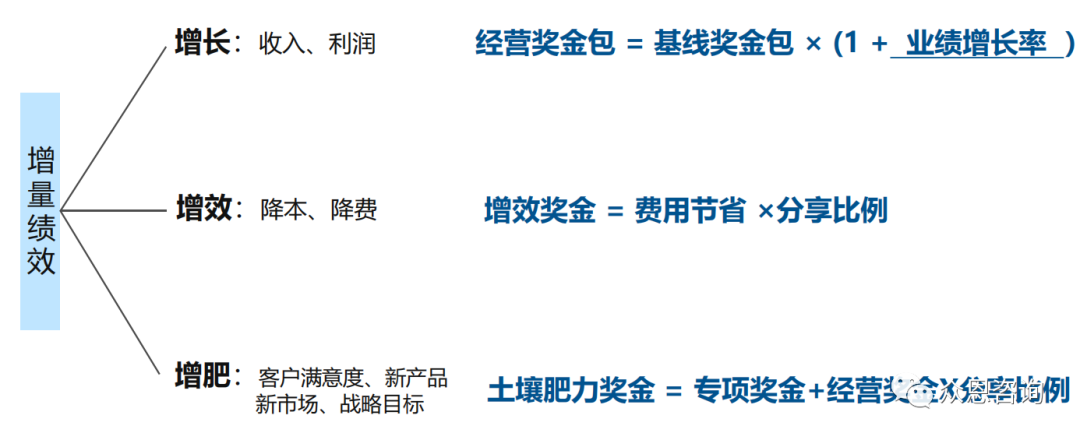Source | Zhong’en “Six Steps to Bonus Design” Online Training Camp
Previously, we shared the six steps of bonus design, which are based on two important principles. These principles provide a clear direction and basis for the generation and distribution of bonuses, allowing for the design of contextualized bonus schemes tailored to the enterprise itself.
According to the “Basic Law of Huawei”, bonus generation should be based on value contribution; bonus distribution is linked to departmental and individual performance improvement. Next, we will analyze these two principles in detail.
Bonus generation must be based on value contribution
Huawei emphasizes that the basis for distribution according to labor is based on ability, responsibility, contribution, and work attitude. Among these, “ability and responsibility” determine salary, “contribution” determines bonuses, and “work attitude” determines benefits and allowances. There is a clear correspondence among these three factors, hence the necessity for bonus generation to be based on value contribution.
So, how should the bonus pool be generated? We can summarize it in one sentence: “When the river has water, the small river is full; it first goes to the team, then to the individual“.

① At the company level, based on the principle of creation and sharing, generate the company’s bonus pool.
② Based on the bonus schemes of each departmental team, determine the bonuses for each departmental team.
③ After generating the bonuses for each departmental team, sum them up to get the total bonus pool, and then exchange from the company’s bonus pool according to the bonus exchange coefficient.

④ Based on individual contribution evaluation, distribute the bonuses to individuals. First consider the “locomotive”, that is, the responsible person, distribute according to the “locomotive” bonus scheme, and then proceed to distribute according to the bonus schemes for key positions and key groups.
Bonuses must be linked to departmental and individual performance improvement
The distribution of bonuses must be linked to the improvement of departmental and individual performance, and the essence of improvement is incremental performance.
In previous articles, we have introduced incremental performance in detail; its connotation includes growth, efficiency improvement, and expansion. By understanding human nature, we find the source of employee motivation, which consists of 3 “wins”: outperforming the market, outperforming competitors, and outperforming oneself.
So, how should bonus distribution be linked to incremental performance?
① Set bonus indicators based on the incremental performance nine-grid model.
For example, from the perspective of growth, bonuses can be designed based on market trends, competitors, or the company’s historical baseline to define a growth baseline, thus generating operational bonuses.
From the perspective of efficiency improvement, bonuses can be designed by benchmarking against industry average effectiveness, competitor effectiveness, or historical baselines, thus generating operational bonuses and special awards.
From the perspective of expansion, bonuses can be designed based on market share rankings, countering competitors, and other strategic matters, setting special incentives.
In summary, set bonus indicator values according to the incremental performance nine-grid model and the company’s specific situation.
② Generate different types of bonuses according to different algorithms based on incremental performance.
From the perspective of growth, operational bonuses generated are linked to key indicators, calculated to determine the bonus pool.
From the perspective of efficiency improvement, efficiency bonuses are generated based on cost savings and sharing ratios.
From the perspective of expansion, soil fertility bonuses are generated based on specific indicators from special bonuses and operational bonuses.

The above is a detailed explanation of the important principles of bonus generation and distribution: there must be contribution to earn bonuses, and bonuses are linked to departmental and individual performance improvement. We will continue to share valuable insights on bonus design, stay tuned.
Zhong’en focuses on stimulating organizational vitality and driving organizational effectiveness, sharing actionable management concepts, methods, and tools from industry leaders like Huawei, to assist growing enterprises in achieving growth and winning battles. If you have any confusion in this area, feel free to engage in discussions.











